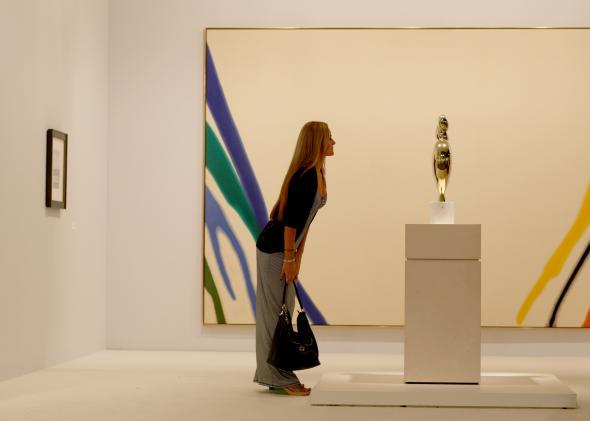This question originally appeared on Quora, the best answer to any question. Ask a question, get a great answer. Learn from experts and access insider knowledge. You can follow Quora on Twitter, Facebook, and Google Plus.
Answer by Michelle Gaugy, owner, Gaugy Gallery:
Many artists feel scorned and rejected. They want to paint what they want to paint, dammit, and they want galleries to represent those paintings and people to love them and buy them. Or rather, they often feel certain that if only galleries would represent those artworks, people would love them and buy them. I wish it were that simple.
I consult to art galleries all over the United States, of every size and type, and have done so for decades. I also own a gallery and have done so for more than 30 years. I have been a professional artist, I’ve been married to a very successful professional artist whose career I built, and I am the agent for three artists currently, as well as consulting to numerous artists internationally. I went on a road trip five years ago and actually visited about three-quarters of all the art galleries in the United States.
Running an art gallery is a very expensive proposition. To succeed, it generally needs to be located around other art galleries, preferably successful ones, which often (though not always) means high rents. If it is not located like this—where people are coming to look for art—then the high rent will end up getting spent on advertising to try to get people in the door, and it usually won’t work as well as the good location would have in the first place. A gallery is lucky to net 8 to 10 percent of sales, after expenses. Very often, they fail.
More often than artists realize, galleries do take a flier on art that is “different”—in style, size, color—from what they normally carry. They don’t want to be static and uninteresting any more than an artist does. Occasionally, these gambles pay off, but more often they don’t. Here’s the deal: The problem when the different work fails is generally not the galleries. It’s public taste and public needs.
But artists tend to blame galleries and what they perceive as the gallery system. And I sometimes agree—the New York system is totally screwed. An artist could (and do) die before getting represented there unless he or she has a lover who owns a gallery or who will open one for him or her. That scene is totally about patronage and parties and fads. But there is a much larger country here, and it isn’t all Nashville, or tiny towns. And it is that that I am writing about, which is the bulk of the galleries in the U.S.—a lot of galleries, in a lot of cities, representing a lot of artists, selling a lot of art.
And the people—the buyers, the ostensible lovers of art—who walk into those galleries live in houses that have rooms: living rooms and bedrooms and such, with furniture in them, with walls on which they can hang paintings. They don’t just hang their paintings arbitrarily. That would look silly and ugly. So give me a damn break about people hanging their paintings over the sofa or the fireplace. Where do artists hang their paintings? Over the toilet? Real people don’t have unlimited budgets for art. They have specific needs. Artists need to get over this silliness and realize that their artwork lives in real homes with real people with real requirements. So go ahead and paint that 75 inch by 75 inch masterpiece if you want, but you just limited yourself to about .01 percent of the population who could even conceivably hang it somewhere—maybe, if the picture windows overlooking the ocean were removed. There are real problems for galleries with odd-sized works is the point.
The other problem is, God help us, color. Personally, I love monochromatic art and so do designers. But more regular people than not respond to color. There are psychological and physics reasons for this. Same with structure and composition: Some kinds of structure are more comfortable for people. None of which means an artist should paint according to these “easy” concepts. But don’t blame the galleries, which are struggling to keep their doors open. Blame the human body. Blame nature. And how these things translate into “taste.” And we can throw decorating magazines into the pile while we’re at it. Plus some critics who have their own agendas …
History tells us the story that before 1800, artists pretty much only made specific art for people who paid them to do it. They were skilled craftsmen. They didn’t starve unless the whole economy went down. “Starving artist” is a modern dilemma that accompanies art made by artists, for artists.
Art galleries are brokers. They are the interface between artists and the public. And they want and need to sell artwork to the public. If an artist is making art that will be loved and cherished and therefore purchased by buyers, you had better believe that a gallery will welcome that artist and that artist’s work into the gallery. However, if an artist is just making art for self-expression, with no regard for his audience, which is the modern conceit, instead of attempting to truly communicate, then why should a gallery risk its wall space for the artist? It risks going broke doing so.
This is the dilemma that confronts the relationship between artists and the modern art market, largely represented by art galleries. And it is a tough one. It is truly a difference in perspective, and a solution will only come from both sides opening and moderating their views.
More questions on Quora:
